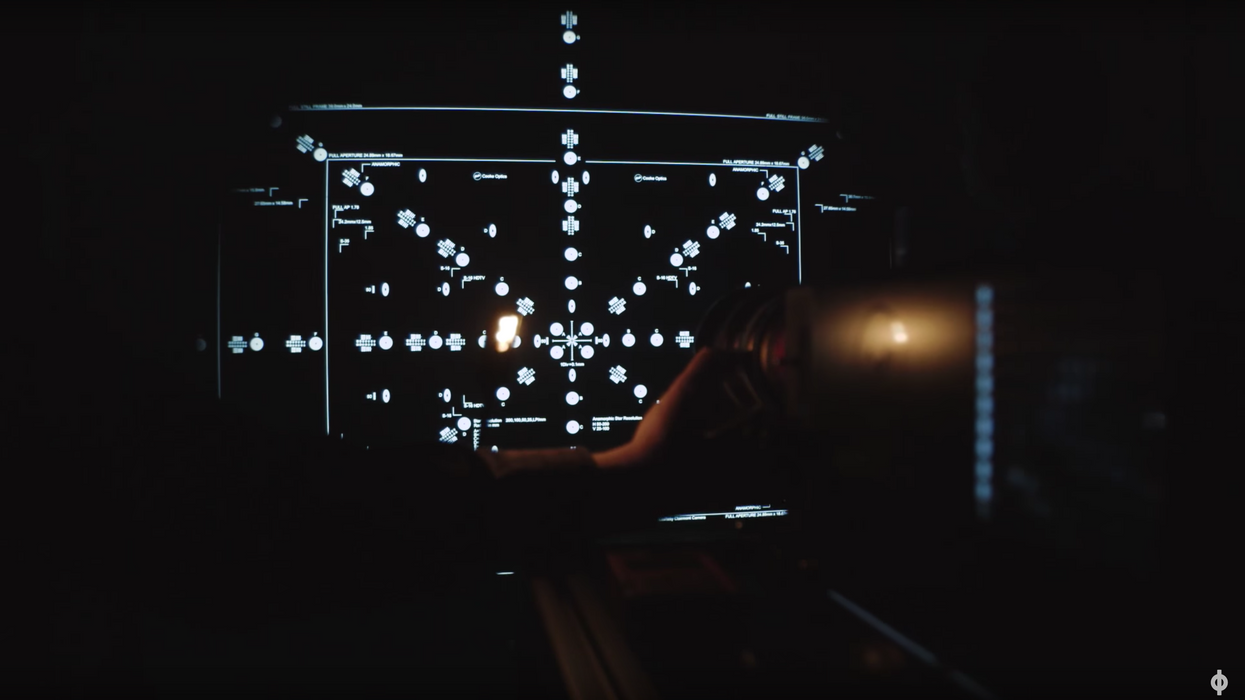Watch: What You Can Learn from Shooting Light the Wrong Way Through a Lens
Rental houses use lens projectors to evaluate the technical qualities of a lens. Here's how it all works.

Why would you ever want to shoot light the wrong way through a lens?
If you throw the lens up on a projector, it will shoot a chart out onto a screen. Evaluating the image projected on the screen allows you to scrutinize the lens in a neutral, consistent environment. This is how lens professionals judge glass in a clear manner.
Of course, "perfection" isn't always the goal with lens design, and there are many aesthetic reasons to choose a wide variety of lenses that come with breathing and distortion. With a lens projector, you can quantify those imperfections; if you wanted to find a set of vintage primes that all breathed the same amount, you could use the information from the projector to help you evaluate your options.
A new video from Cinematography Database shows this process in action:
Here's the most important information you can glean from testing a lens on a projector.
1. Lens coverage
The chart is designed to show you a variety of sensors so you can easily see which sensors the lens covers. This will also show you where, if at all, vignetting will appear.
2. Sharpness
The chart is designed with a distribution of symbols that make it easy to evaluate how sharp the lens is. It's especially important to scan the whole image—not just the center, but also the corners—to get a handle on the overall image quality of the glass.
3. Breathing
Due to the nature of the high contrast chart, it's exceptionally easy to see how much the lens breathes as you rack from one end of the focus range to another.
4. Distortion
The perpendicular lines of the rectangles on the chart allow you to evaluate lens distortion. This should be looked at throughout the zoom range on a zoom. It's especially worth a look on wider primes and anamorphics.
Have you ever tested a lens? How did it inform your decisions?











![Ethos, Pathos, Logos: 20 Effective Ways to Advertise [Infographic]](https://nofilmschool.com/media-library/ethos-pathos-logos-20-effective-ways-to-advertise-infographic.jpg?id=34064614&width=600&height=600&quality=90&coordinates=560%2C0%2C0%2C0)
